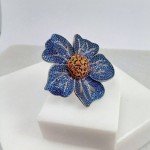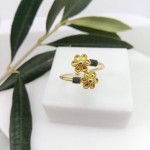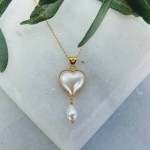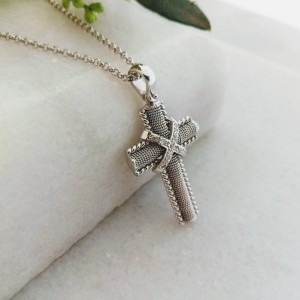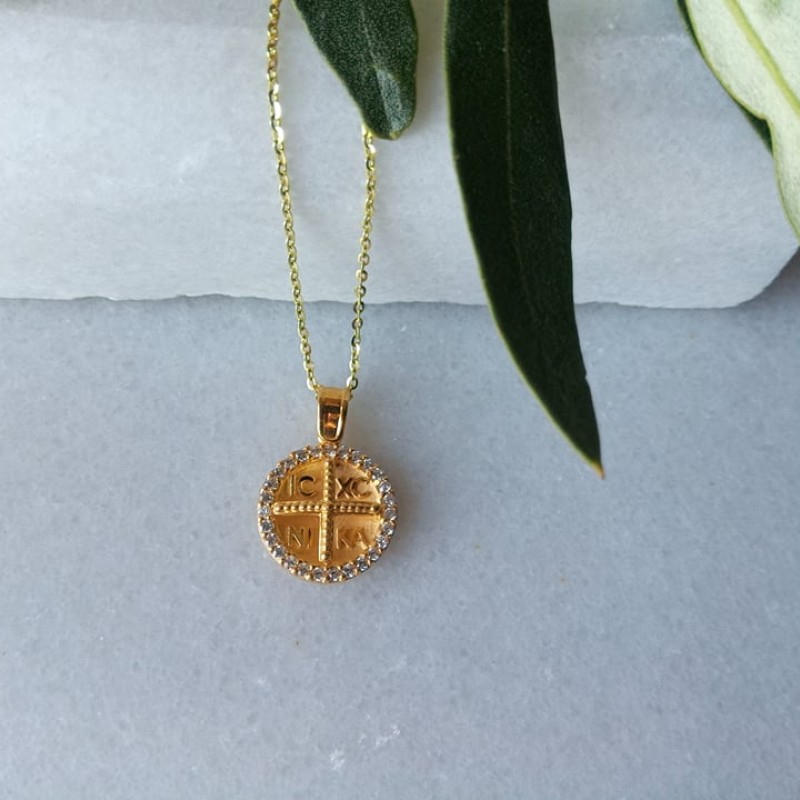
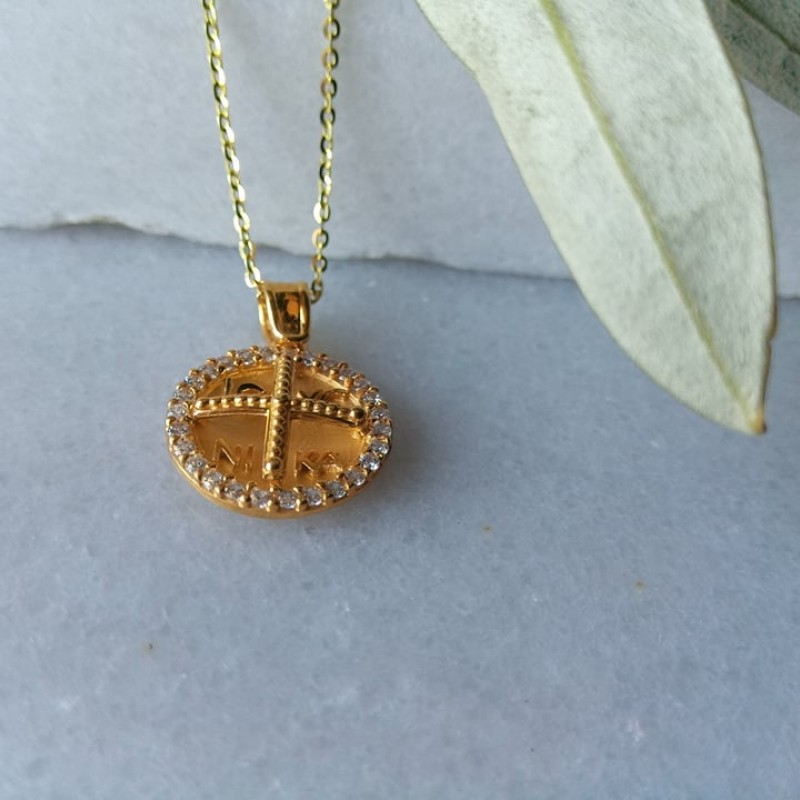
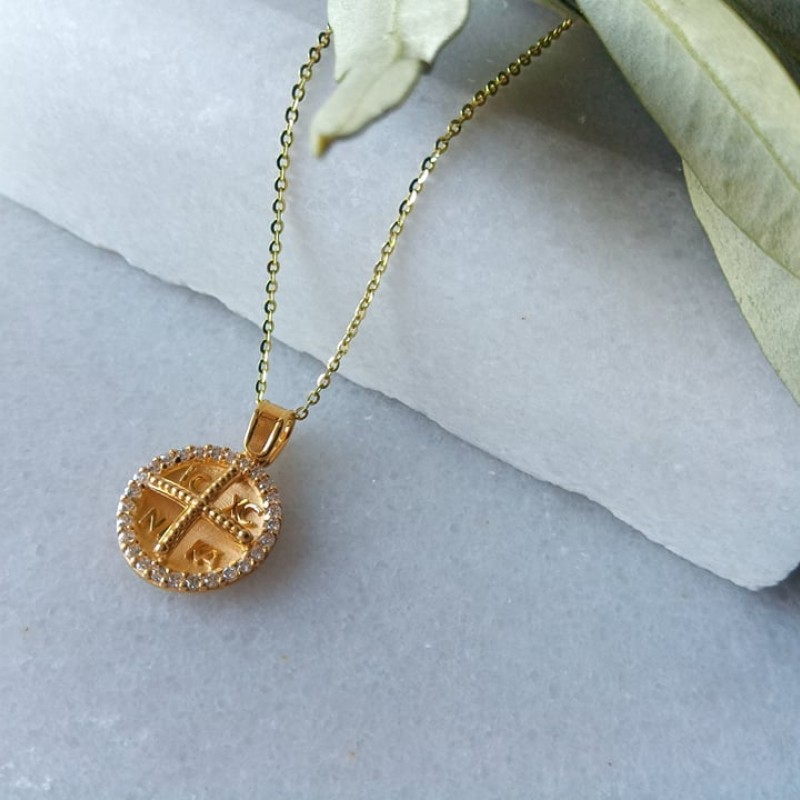
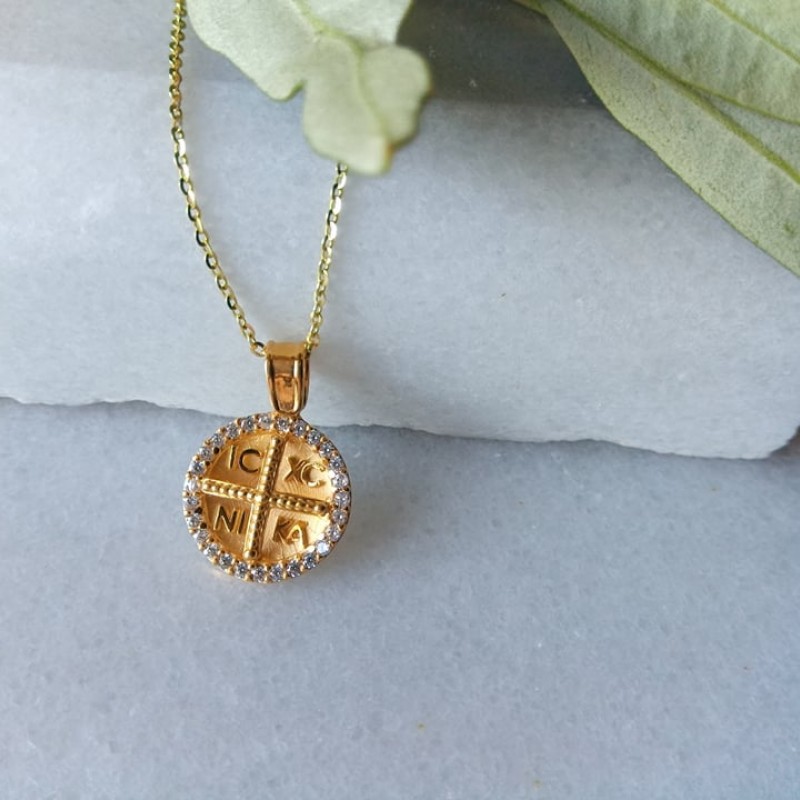
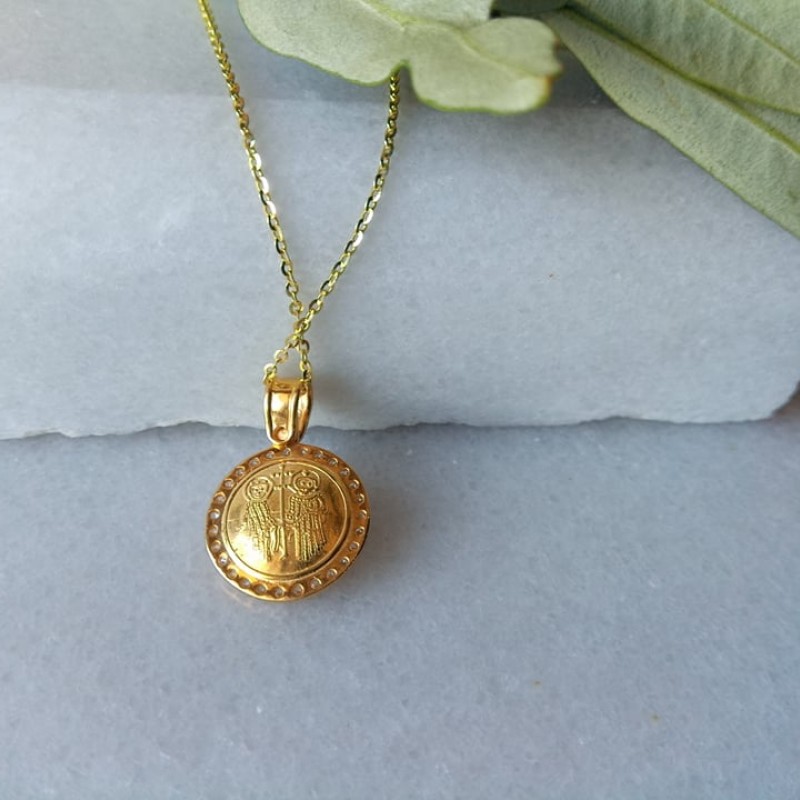
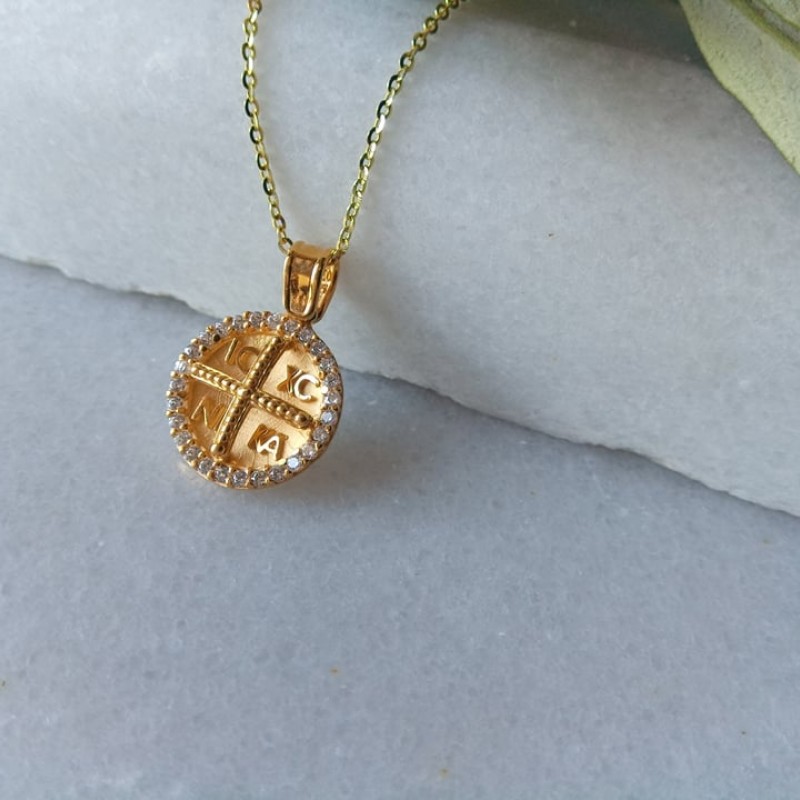






Byzantine Pendant (Constantinato) with round zircon on its perimeter in K14 yellow Gold The ideal gift for a newborn, a child or a lady!!!
Jewel History
There are many folk traditions about these coins that developed mainly during the Byzantine period. According to them, pregnant women wore Constantinato both for the protection of the fetus and for the convenience of childbirth. Constantinato also brought children as amulets against the Basques. Nevertheless, it was believed that Constantinato accelerated the fermentation of flour and yogurt. In general, the beliefs about the Constantinata go back mainly to the sanctified persons who depicted in combination with the finding of the Holy Cross by St. Helen. The consequence of this was that Constantinata were considered in some cases even of equal value to the honest wood. Specifically, there was a tradition that when St. Helen found the Cross, she cut it in two and left one part of it in Jerusalem, and the other transported it to Constantinople.
The sawdust from this cutting was put in a crucible with other precious metals from the alloy of which the Constantinata were cut. A similar tradition is found among the Greek Vlachs in Macedonia as well as in Bulgaria and Russia, who may have come from a Byzantine synaxary. Among other traditions that developed in the Aegean islands and in the Peloponnese in Constantinople, hemostatic properties were attributed during childbirth, considering that their possession cures the "turning (loosening) of the navel". In the Greek Revolution of 1821, the occupation of Constantinople by the Greek revolutionaries was considered an amulet for the "bad shot". Also that it cured fever, epilepsy and jaundice.
In Mani until today the Constantinata are considered valuable family heirlooms and even when they are considered to be miraculous they place them in the icons, while in many places their owners present them to the churches every Holy Thursday and bless them. Continuation of the above traditions is to be offered even today in infant gold coins, (at births and baptisms) or more commonly the gold cross that was later established replacing the Constantinato. This pendant is NOT accompanied by a chain.
Our jewelries are accompanied by a certificate of authenticity and are shipped in a beautiful gift box.
For any questions, please don't hesitate to contact us.
For more fine jewelry please feel free to visit my store.
Thanks for browsing!
Nafsika Tsourapa
| Characteristics | |
| Diameter | 1,5 cm. |
| Jewelry Type | Byzantine Pendant/Constantinato |
| Jewelry Weight | 2,37 gr. |
| Material | 14 carats Gold |
| Sex | Women / Girls / Newborn |
- Stock: In Stock
- Model: CNST-0400001

